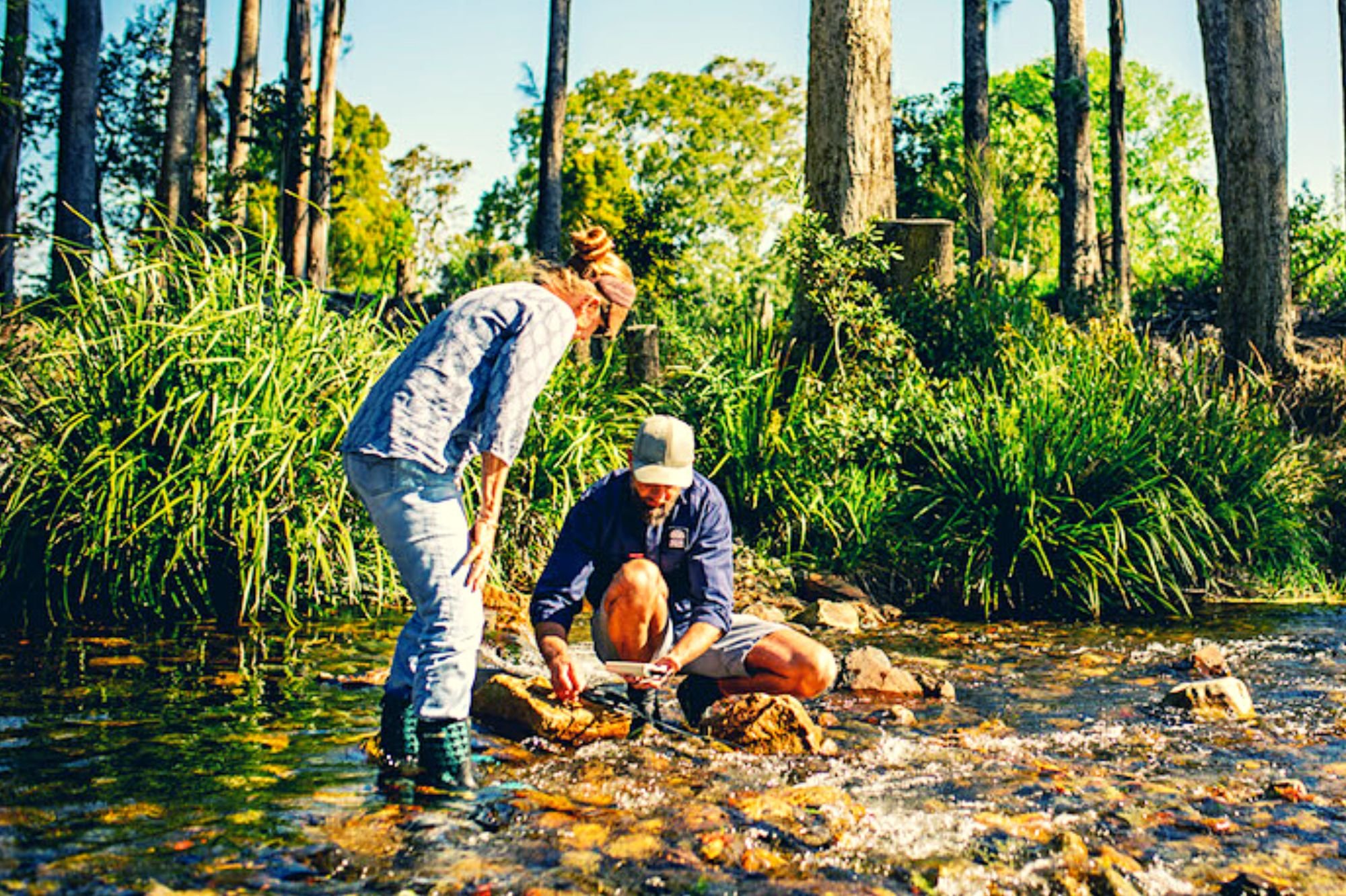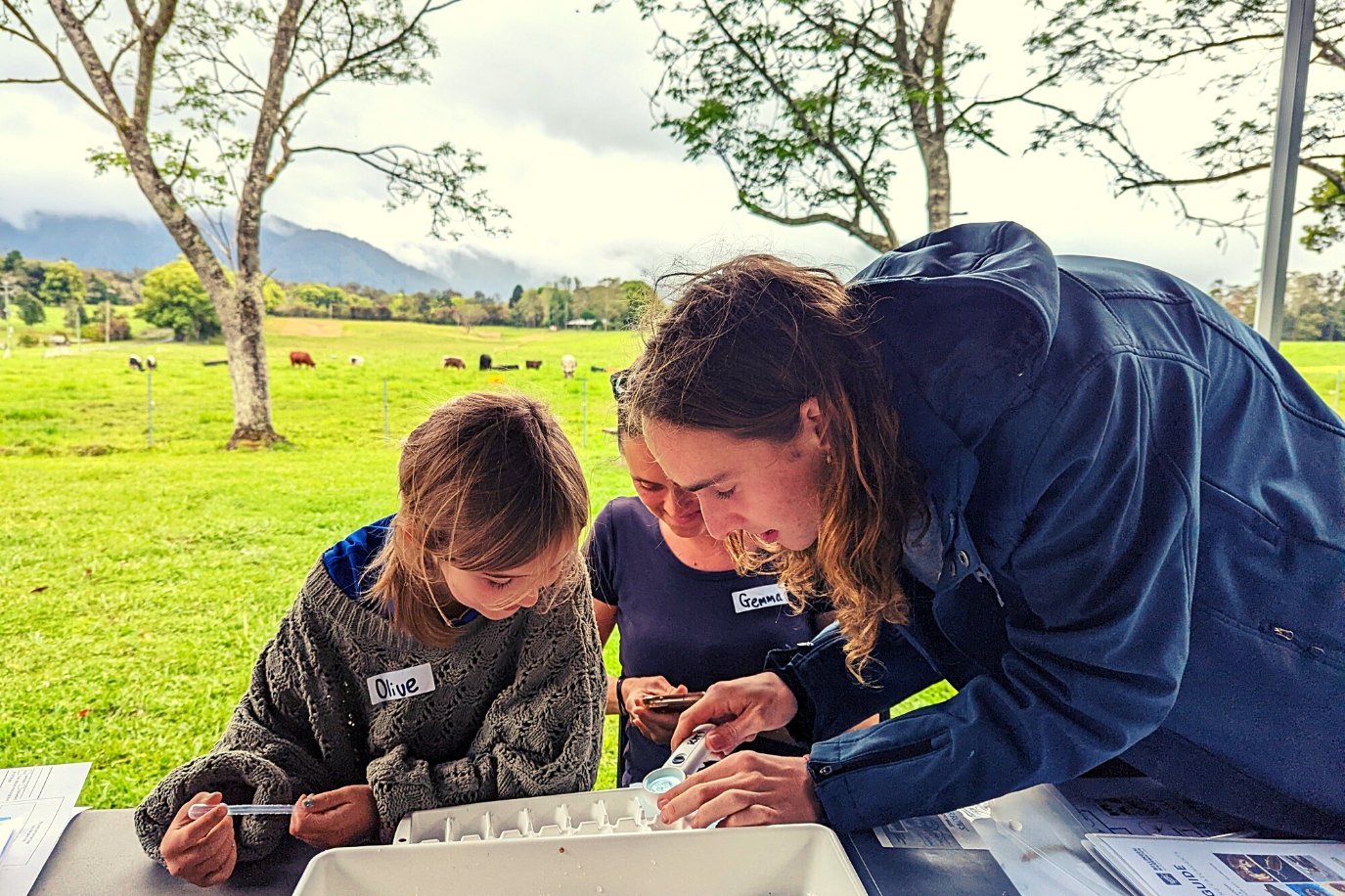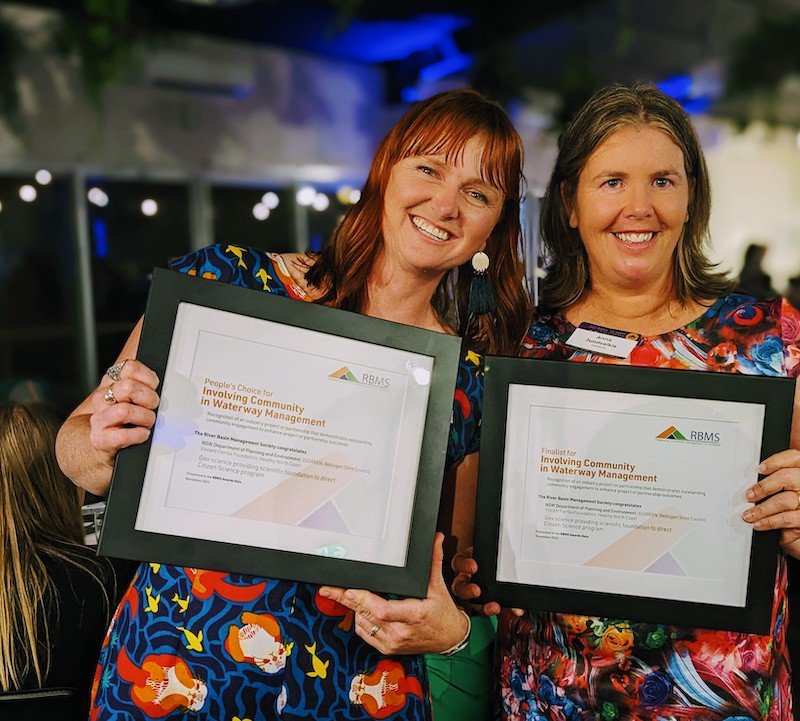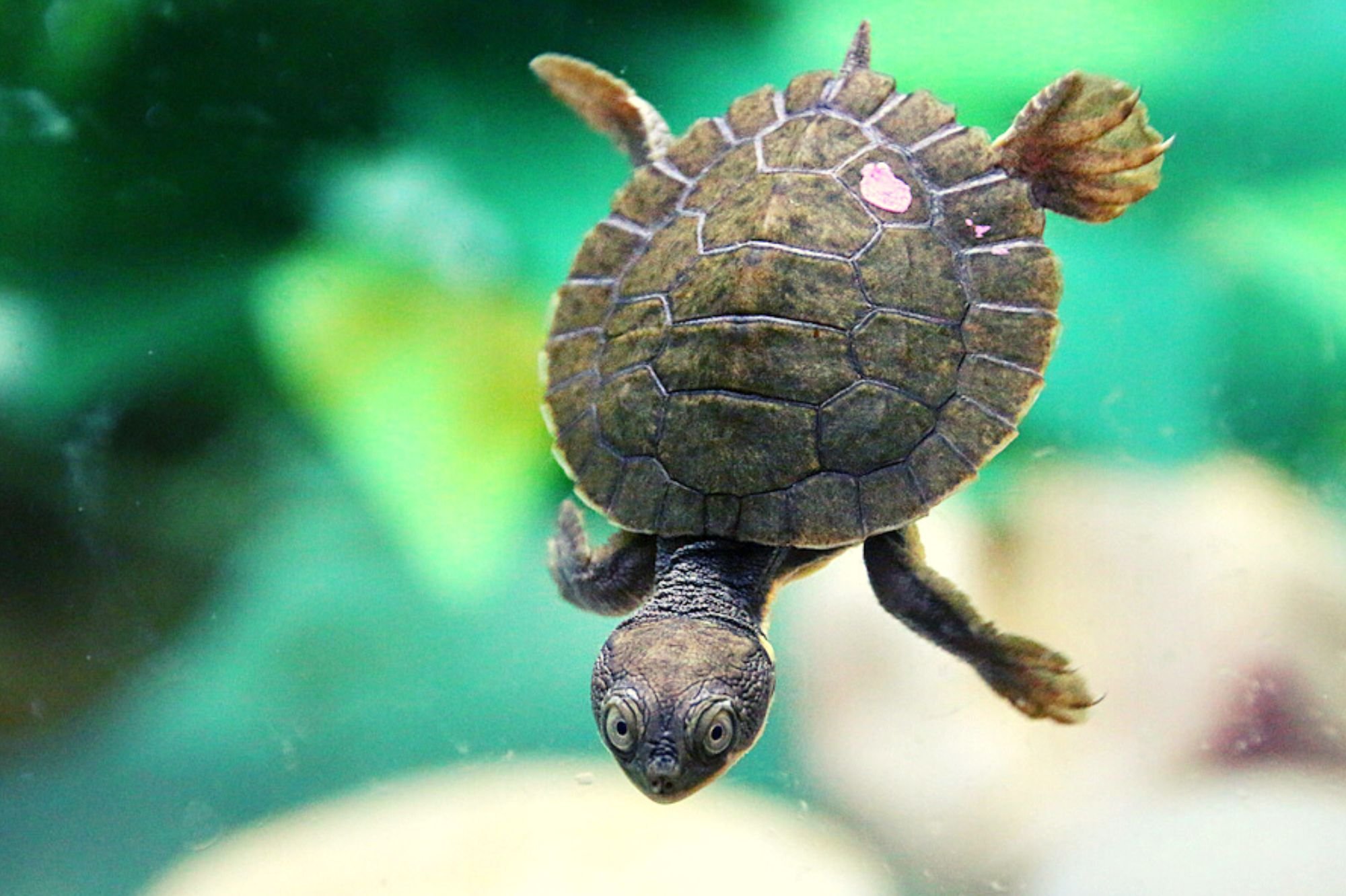Bellingen Riverwatch
Engaging communities to protect rivers
Bellingen Riverwatch is the largest water quality monitoring citizen science program in NSW and the largest macroinvertebrate monitoring citizen science program in Australia.
Our volunteers have collected the largest citizen science water quality monitoring dataset in NSW.
BELLINGEN RIVERWATCH FRONTIERS IN ENVIRONMENTAL SCIENCE PAPER
Published January 2024
Can citizen science inform science?
Evaluating the results of the Bellingen Riverwatch citizen science program and a complimentary government monitoring program North Coast, NSW, Australia.
Adrian Dickson¹*, Nakia Belmer¹, Amy Denshire², Ingrid Garland³, Sue Lennox², Shane Ruming⁴, Dominic Lawler¹ and Adam Wethered¹
¹Department of Planning and Environment, EES Laboratories, Lidcombe, NSW, Australia, ² OzGREEN, Bellingen, NSW, Australia, ³ EnviroComm Connections, Hunter Valley (Whittingham), NSW, Australia, ⁴ North East Biodiversity and Conservation, Department of Planning and Environment, Coffs Harbour, NSW, Australia

Macro Muster 7
WED 23rd OCT 2024
(World Turtle Day)
Our Purpose
Citizen scientists and the scientific community working together to collect long term data, undertake river restoration activities and communicate information to support the protection of our rivers and ecosystems for future generations.
Why rivers?
Water is the source of all life. Everything depends upon water. Nothing can survive without it.
Why these rivers?
These rivers of the Bellinger and Kalang catchments are unique and some of the healthiest in Australia. Rivers like this just don’t exist everywhere. We want to keep these rivers this healthy. Forever. To do this, all residents and tourists need to work together to protect what we have.
Why now?
Bellingen Riverwatch data supports the recovery of the critically endangered Bellinger River Snapping turtle and informs catchment management decisions to help protect these important river systems for generations to come.
How can you help the rivers?
Research has shown that word of mouth can have a significant impact of people’s behaviour. People are more likely to believe and act on the advice of someone they know and trust, rather than on advertising and marketing.
A key part of what Bellingen Riverwatch does, is to help get the key messages out there into our community about the 10 ways we can all help protect these rivers.
Our programs connect people with the river and the lifeforms it supports. Our our Macro Musters, we come together, do meaningful science together, learn about and celebrate our rivers! There were over 100 people involved in our last muster who all connected with the waterbugs of the river and learnt about the 10 ways, with many participants from the next generation. We are excited about the impact of this event now, and as it grows, in terms of environmental education and behaviour change.
What We Do
-

Water Quality Program
Our volunteers have collected the largest water quality data set in NSW.
-

Macro Program
The largest macroinvertebrate monitoring citizen science program in Australia.
Award-winning program
Bellingen Riverwatch received two River Basin Management Awards in 2023.
Our Sites
Our volunteers monitor 25 sites for water quality monthly.
Our volunteers monitor 6 sites for macroinvertebrates biannually.
What our 5-year data report data tells us
The Bellinger and Kalang rivers are unique and some of the healthiest and most pristine rivers in Australia.
-
“The overall condition of rivers across NSW is moderate.”
- NSW SOE, 2021
Unlike the state average, Bellingen Riverwatch data (2017-2022) shows that the rivers of the Bellinger catchment and Kalang catchment are in very good health.
Our water quality data catchment scores are 90% (Bellinger catchment) and 94% (Kalang catchment).
Our Pesticides Detectives data tells us that no pesticides were detected in any of the seven Bellingen Riverwatch sites that were tested.
Our macro data tells us that the sites we sampled have relatively healthy to very healthy macroinvertebrate communities. Results show a high abundance of known sensitive macroinvertebrate taxa collected at both Waterbug Blitz events which suggests that the instream habitat and water quality at these sites has been consistently good to very good.
Our Platypus eDNA data tells us that this region is a stronghold for the platypus.
-
There are four main areas of concern that the Steering Committee would like
to highlight in Bellingen Riverwatch data (2017-2022) :
Upper Bellinger River (B1, B2, B2.1, B3, B3.1)
B5.1 Summervilles Road
B7.1 Caratti Creek
S1 Spicketts Creek
__
1. Upper Bellinger RIver
In the upper Bellinger River sites (B1, B2, B2.1, B3, B3.1), water quality across the parameters is generally excellent. One anomaly we have found is around elevated available phosphate levels at B2.1, which is also influencing B2. Our partners have been intrigued by these results for many years. As the area is currently forested, past agriculture practices and/or poorly managed onsite management systems could be a likely cause of these poorer results, as could the underlying geological conditions of this area which may have a higher phosphorus content affecting the stream.
These phosphate levels seem to also be affecting dissolved oxygen too. Often if nutrient like phosphate is found in the water, some oxygen levels can be affected by eutrophication, as well as the decomposition of organic matter. Also in this case, B2.1 could have some groundwater intrusion which is causing some iron-precipitate to affect the stream, which can pull oxygen from the water. We recommend that funding be sought for further investigation into origins of high phosphorus at this site.
2. B5.1 (Summervilles Road)
In the mid Bellinger, there are turbidity issues presenting since the high rainfall events from May 2021 at B5.1 (Summervilles Road), most likely due to runoff and bank erosion issues upstream of this site.
3. B7.1 (Caratti Creek)
Samples collected at Caratti Creek (B7.1) often showed elevated levels of phosphate and turbidity and lower levels of dissolved oxygen. Turbidity caused by soil erosion and algal growth among other things is often related to urbanised streams that experience high amounts of stormwater. Further investigation is needed to determine potential sources.
4. S1 (Spicketts Creek)
The S1 site (Spicketts Creek) has continually presented with issues over our five years of data. S1 has dispersed soil types once the riverbed is degraded at a certain level. We recommend that further funding be sought for investigation into the cause of these continuing poor water quality results.
“We are excited to showcase the incredible efforts of these volunteers and this citizen science program with the wider science community.”
- Dr Nakia Belmer, Scientist - Estuaries and Catchments, Department of Climate Change, Energy, the Environment and Water
Our Steering Committee has published a paper in an international journal about our water quality program.
All residents and tourists need to work together to
protect what we have.
We work to influence policy and decision making, and educate the community, now and into the future.
-
Reports and Presentations
Explore reports and presentations from Bellingen Riverwatch and other OzGREEN programs at the link below.
-
Free Resources
Explore free resources for community members and schools from Bellingen Riverwatch and other OzGREEN programs at the link below.
Engage our team to deliver a hands-on workshop for your audience
-

Workshops for Schools
Explore workshops for schools from Bellingen Riverwatch and other OzGREEN programs at the link below.
-

Workshops for Councils
Explore workshops for councils from Bellingen Riverwatch and other OzGREEN programs at the link below.
-

Workshops for Events
Explore workshops for events, conferences and festivals from Bellingen Riverwatch and other OzGREEN programs at the link below.
-

Corporate Workshops
Explore workshops for staff development days or family days from Bellingen Riverwatch and other OzGREEN programs at the link below.
Meet our Steering Committee
Fourteen partners from across NSW work together to guide the program’s direction.
Volunteer with Us
Join the BR family!
Our Rivers. Our Future.
Our Impact
Bellingen Riverwatch plays a part in securing the future of the critically endangered BRST, and other threatened species.
Our data is shared with the NSW Government Saving our Species recovery program for the BRST and 14 Steering Committee partners and supports the successful breeding of turtle captive breeding programs at Symbio Wildlife Park and Taronga Zoo Sydney.
-
Site selection for Bellingen Riverwatch riparian works, 2020 + 2022
Bellingen Shire Council Coastal Management Program Scoping Study, 2021
Site selection for Local Land Services river restoration works, 2021
Bellingen Shire Council Water Quality Monitoring Plan, 2022
NSW Government Water Sciences Flooding Recovery Project Site Selection, 2023
-
9.4K website users in 2022
400 Newsletter subscribers
5.7K WQM Map views
770 Macro Map views
950 Facebook followers
-
Australian Citizen Science Association Conference, 2020
NSW Waterwatch Conference, 2021
International River Health Symposium, 2021
Australian Citizen Science Association Conference, 2022
-
Woolgoolga Lake Group
Revive Cathie Group
Threatened species that rely on these rivers
-
Critically Endangered
Image: Paul Fahy
-
Endangered Ecological Community
(NSW) Critically Endangered (Commonwealth)
Image: Shane Ruming
bellingen riverwatch faq
learn more about riverwatch
Sponsor Us
Power us to continue our important work.
-
Anna Juodvalkis
Partnerships Manager
anna@ozgreen.org.au
02 5615 8108
We’d love to keep you in the loop
Bellingen Riverwatch Steering Committee
-

Dr Melissa Giese
Senior Team Leader, Ecosystems and Threatened Species (North East), Biodiversity Conservation and Science, Department of Planning and Environment
-

Dr Nakia Belmer
Scientist - Estuaries and Catchments, Science Division, Department of Planning and Environment
-

Dean Kelly
Yurruungga Aboriginal Corporation
-

Adrian Dickson
Senior Scientist River Assessment – Estuaries and Catchments Science, Science, Economics and Insights, Department of Planning and Environment
-

Daniel Cain
Senior Project Officer - Threatened Species, Biodiversity and Conservation, Department of Planning and Environment
-

Asheley Goodwill
Senior Land Services Officer, Natural Asset Protection, North Coast Local Land Services
-

Celeste Lymn
River and Biodiversity Officer, Bellingen Shire Council
-

Andrew Yager
Project Manager, Bellinger Landcare
-

Justine Elder
Elder Enviro
-

Shane Ruming
Threatened Species Officer, Saving our Species, Department of Planning and Environment
-

Chris Ormond
Threatened Species Officer, Saving our Species, Department of Planning and Environment
-

Sue Lennox
Co-Founder, OzGREEN
-

John Schmidt
Senior Coast and Estuary Officer, Biodiversity and Conservation Division
Water, Floodplains & Coast (North East), Department of Planning and Environment
-

Ingrid Garland
Apex Enviro Solutions, NSW Waterwatch
Raw Data
Our raw data is shared with with the NSW Government Saving our Species for the Bellinger River Snapping turtle recovery program. Our water quality raw data is also available at the Waterwatch portal and the DPIE SEED portal.
Contacts
-
Bellingen Riverwatch Coordinator
Sam Daykin
sam@ozgreen.org.au
0447 949 259 (Mon-Thurs)
Bellingen Riverwatch Program Manager
Amy Denshire
amy@ozgreen.org.au
-
River & Biodiversity Officer
Justine Elder
02 6655 7300
council@bellingen.nsw.gov.au
Water Resilience Officer
Amanda Carter
02 6655 7300
council@bellingen.nsw.gov.au
-
-
-
facebook | bellingenriverwatch
insta | ozgreennorthcoast
linkedin | company/ozgreen












